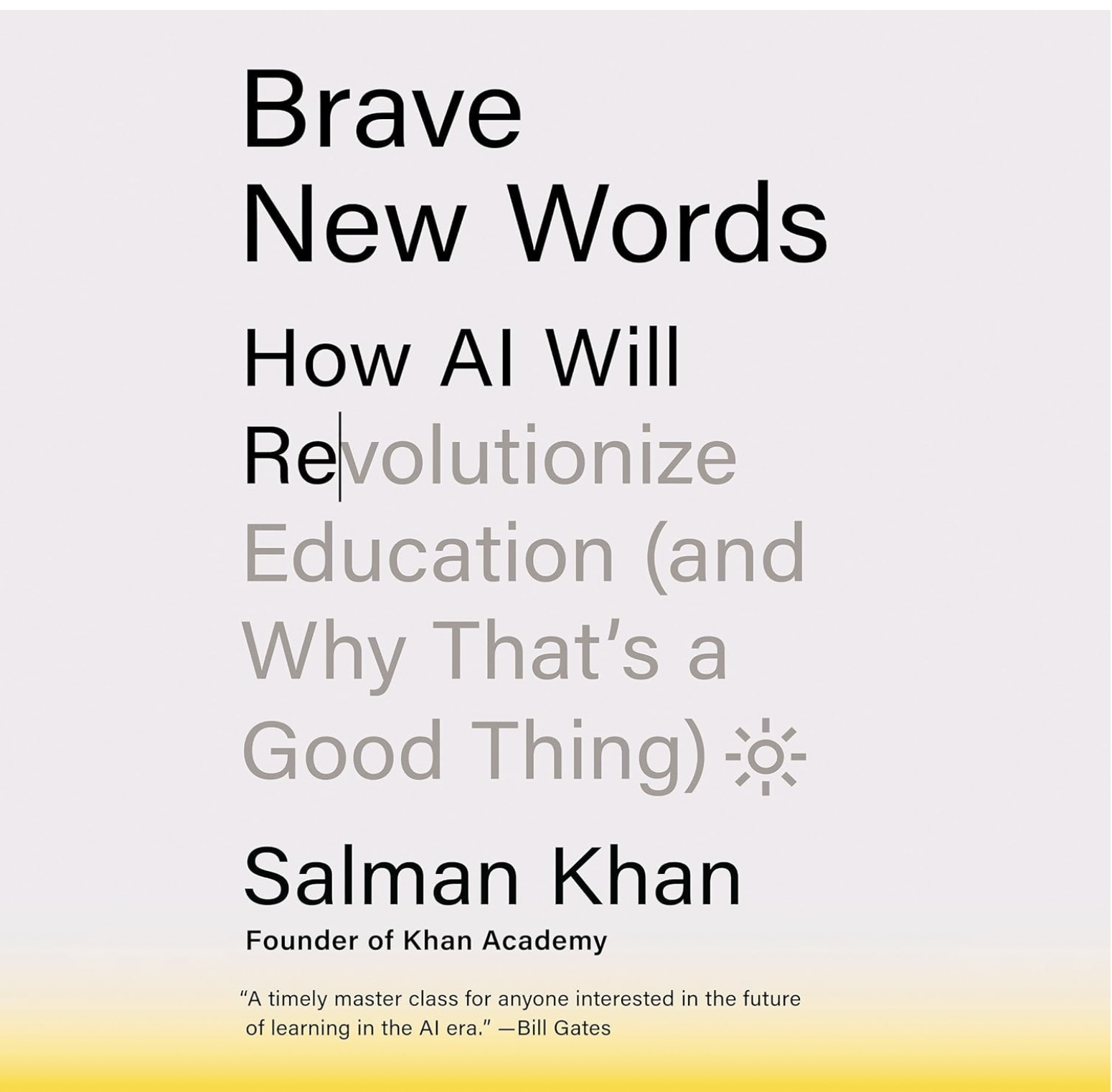
Brave New Words: How AI Will Revolutionize Education (and Why That’s a Good Thing) by Salman Khan paints a rosy picture of how AI can be used to provide personalized tutoring and assessment for every student. It can also help parents as they monitor and encourage their children to focus on important learning. While I hope that Sal is right to be positive, this book reads a bit like an advertisement for Kahnmigo, his tutoring product. None the less, it is a must read for parents, teachers, and school leaders.
Introduction: Let’s Write a New Story Together
- Sal and his team were given privileged access to ChatGPT-4 before is was available to the public. It’s clear that Sal has a bias that AI can be beneficial for education at all levels and he challenged his team to figure out how to use AI to improve the offerings of The Khan Academy. While many school districts were soon to ban ChatGPT-4 and other AI systems, Sal wanted to figure out how to make it a personal tutor. A guiding principal was to be careful, but to not be afraid of change.
1. Rise of the AI Tutor
- Most students that go to college don’t even place into college level math. English Language Arts placements aren’t much better and writing scores are the worst. What theses students need is specialized feedback that allows for mastery learning. What is needed is an intimate relationship with a tutor who has an in-depth sense of what they know.
- Using the power of ChatGPT, Khan and his team created Khanmigo. It’s a personal AI tutor that can ask the kind of leading questions that a real tutor can ask. It’s designed to meet students at their learning edge also known as the zone of proximal development. It pushes the student to think deeper, make students more comfortable, and be available 24/7.
2. Giving Voice to the Social Sciences
- Cheating is less of an issue if everyone is using AI to help them write. It’s a first pass tool that isn’t good at originality. It requires students to rethink the way they write. In essence, students have to learn how to collaborate with AI.
- Next we have examples of how Khanmigo talks to the students and how they can use Khanmigo to talk to famous historical figures like George Washington and Harriet Tubman. It can also talk about abstract concepts like the 14th Amendment. In each case the person or thing they are talking to pushes them to think deeper rather than giving them the answer.
3. Empowering the Next Innovators
- This chapter contains examples of text that Kahnmigo generates from specific prompts. This will give you a good idea of what it can do. Keep in mind that Kahnmigo is built on ChatGPT-4, which makes it more powerful.
- The goal here is to develop Kahnmigo versions of every course. This can be a big help for poor schools that don’t offer courses like algebra 2, chemistry, physics, and calculus. Such schools also lack enough students to fill these classes. Without access to these courses in high school, students won’t be able to take on a STEM major in college. Kahnmigo, with permission, can also send emails and texts to students, parents, and teachers in order to hold students more accountable. This is an example of proactive intervention.
- By early 2024, Kahnmigo was being piloted by over 30,000 students and teachers with successful feedback. It is also important to note that the product stresses how subjects work together making it an interdisciplinary tool.
DrDougGreen.com If you like the summary, buy the book





